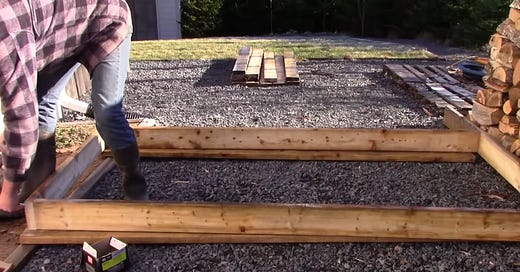Is it OK To Use Treated Lumber? (Part 2)
With the rising costs of lumber, does the greater longevity of treated lumber make it a better option for raised beds?
The initial purpose of writing this two-part article was to address the issue of the affordability of maintaining wooden raised beds, and to explore treated lumber as an option. In the previous article I came to the conclusion that while most types of treated lumber are probably not a good idea for growing vegetables in raised beds, lumber treated with copper azole is probably OK.

In this article I want to explore the affordability aspect of this option in more detail. I will do this by means of a cost comparison over time to work out the difference in cost over time that might result from using Micronized Copper Azole (MCA)1 rather than untreated spruce 2”x6”. ‘
A simple 4’x8’ bed made from untreated 2”x6” lumber requires three 2”x6”x8’ lengths of lumber (here’s how). Two pieces of the 2”x6” are used for the sides, and the other piece of 2”x6” is cut in half to make the ends. Everything is fastened together using 3” crews or 3 1/2 “ nails (screws are the better option here). When using MCA treated lumber, the long sides can be made using two 5/4”x6'“x8’ and one 2”x6”x8”. The 2”x6”x8’ gets cut in half to use at the ends, because 5/4” wide ends would simply lack the necessary robustness for fastening. The thicker lumber is needed for all sides with the untreated wood because it degrades so quickly.
Keep reading with a 7-day free trial
Subscribe to The Maritime Gardening Newsletter to keep reading this post and get 7 days of free access to the full post archives.



